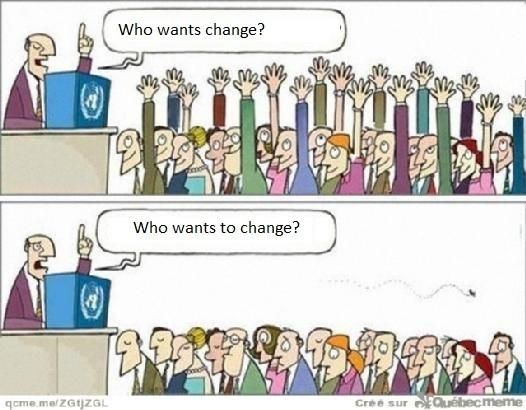The speed and effectiveness with which organizations innovate depends on it people: their skills but certainly their willingness to ‘play ball’. On your next (or current) change or transformation project, you might run in to 5 anti-innovation archetypes (behavior, not people per se). As we all know, working with each one of them is just part of the change, so I’m giving a few practice based suggestions that might even make it fun.
1. ‘The Passenger’ (Iggy Pop)
Passengers come to meetings unprepared and don’t take initiatives (for example develop proposals, prepare a decision). Turn passengers into collaborators by clarifying their role and their value in the total project. Give them ‘Quintillian’ instructions (=think about how you CANNOT be misunderstood) and ask for concrete outputs. Follow-up, follow-up, follow-up. Make them shine for their contributions.
2. ‘Currency of cynics’ (Epidemic)
Cynics are mostly stuck in some kind of past disappointment. They greet everything with sourness disguised as humor. And I suspect they earn 10 cents every time they pronounce the sentences: “I’m just playing the devil’s advocate” and “I don’t want to appear cynic, BUT…” Use their inputs to lower the risks and to investigate possible pitfalls in your projects. Up to a certain point, you can pretend to be deaf for cynicism, but after a while it starts to demotivate others. My suggestion is to name the cynicism you observe and have an “are you with me” conversation.
3. ‘The less I know the better’ (Tame Impala, here covered by …)
Even though -as a customer- they demand excellent service, in their professional lives they are “just doing their jobs”. Extra information might just mean extra responsibility. No thanks! This attitude kills customer experience. So ask them to talk about their specific job first, then show their input in the service/value chain. If that doesn’t work, put them in the shoes of the customer.
A great cover of this song by Pieter Schrevens, using an -aha!- innovative approach with loops only.
4. ‘King of my castle’ (Wamdue Project)
Kings block the entry to their castle or department, because “there’s no way somebody else is going to tell them how to run things.” Show the king the treasure: the advantage for him to collaborate, what he has to loose if he doesn’t. Stick to the facts. Don’t engage in politics or emotional discussions.
4. ‘One trick pony’ (Royal Blood)
One trick pony’s have had success with a certain approach in the past, so now they apply it to every challenge they meet. They are the men with hammers who see nails everywhere. Don’t go head to head. Think along with them and picture what will happen if you use their approach. Then name the downturns. After that, propose your alternative.
5. ‘Young folks’ (Peter Bjorn & John)
Some ‘seasoned’ co-workers just don’t listen to younger people “because they are less experienced.” Shame! If you systematically block out ‘younger ideas’, you’ve probably stopped learning. I’m (only?) 38, but I’ve learned more than 50% of vital life lessons from people younger than me. While young people are vital to inject organizations with new ideas and innovation spirit, you can observe in some people’s body language that they’re not taking their younger counterparts seriously. That’s the moment where you should jump in and support ‘junior’, at least let him/her make his/her point.
What kind of archetypes have you met? How did you manage them?










